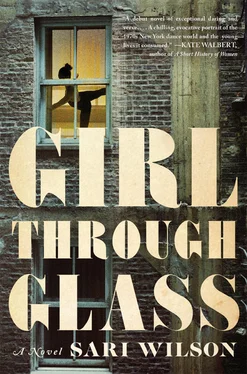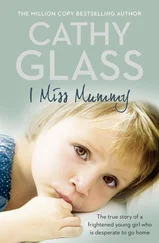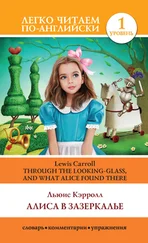I smile. “It was a long time ago, another world. But you’re a bunhead — right — I mean, a dancer?” Laughter from the good-size crowd that remains.
“As a student at SAB, I learned from Mr. B, as we called him, the great power of my body, but I did not have the ability to understand that power. I loved going to class because I loved to feel what my body was capable of doing. It amazed me. But when it was over — in my case, I had to leave the school for external circumstances — it was gone. Maybe I wrote my book to get it back.”
“So you don’t hate him — Mr. B?” I’m shocked that she would ask this of an academic. The bizarre simplicity of it.
As a child, I had too much power, a strange power, the power of the object. It is passive, but it is total. When I hear the gorgeous notes of a child pianist or the lyrical call of a child violinist, I think, poor child; I think, lucky child . Now that I am a grown person — a grown-up —I see what we desire from them. I think of Maurice saying, “You were bright, you shone.” It’s like pebbles of fire. They eat it and they burn.
So you don’t hate him?
But that is what some of us want and must have: to burn, to burn up, to expire in flame. I see an image of the earliest ballerinas who donned their shin-length tulle tutus to evoke the spirits of the other-world at the all-too-common risk of catching fire in the gas lamps at the edge of the stage. Their offering was to make themselves combustible. And many of them died. Maurice was the first to tell me that. But it was later confirmed in the headlines I found in microfiche while researching an article on the earliest ballerinas: Another ballerina goes up in flames, suffers third-degree burns .
Yes, I loved him as only a girl could love him with stars in her eyes, with dreams in her head. And he gave me ashes.
But first he showed me the fire. And for a moment it burned. And I stood in it, it was all around me.
I hear myself saying, “No, I don’t hate Mr. B.”
I look at this young girl and I feel like I’m seeing myself thirty years ago. Her hair is pulled back, her eyes are hooded, her cheeks without blemish, her body articulated and slight. She has the sinewy ethereal quality of a serious dancer. I know how hard she has worked to obtain it. Now I’m up here on this podium, shifting in my red high heels and black suit. What do we have in common? That girl is still in me. She is back in me. And as I open my mouth I find that I can’t say what I’ve planned. This year away from academia, getting to know my son, has been like a long sleep that has left me refreshed. I feel like I have finally woken up.
What of that time in my life? It is finally past. The guilt is past. And the straining after beauty. But do I regret it? I find, with surprise, that I can’t.
I give her a gift I never thought I could. I say, “I loved him as only a girl could love him. With stars in her eyes, with dreams in her head,” I say.
I smile and I mean it. I close my laptop and pack up my things.
I owe a great debt to many people for bringing this novel to fruition and helping to bring it into the world. Gratitude to my terrific agent, PJ Mark, for his sustaining vision and perceptive advice, and my brilliant editor, Terry Karten, for her confidence in me as a writer and uncompromising belief in this novel’s potential. I am fortunate to have found them both. They have made this book more than I ever thought it could be. Thanks also to Shelly Perron for her keen eye and attention to the logic of my fictional worlds. I am also grateful to my many readers of the various drafts: Jacob Molyneux, whose perceptive readings gave this book a focus, and Jean Kwok, without whom it’s safe to say this book would not have happened, and to my mother, Nancy Wilson, whose steadfast encouragement and keen literary sensibility have made all the difference. Marya Spence, who pulled it from the slush pile, and Tori Marlan, Joy Katz, Zoe Zolbrod, Eliza Amon, Samantha McFerrin, Natasha Chuk, Travis Holland and the Knight-Wallace Fellows writers workshop, Len Neufeld, and Randee Falk for all their insights and generous gifts of time. And to Jill Dearman, a great coach. To my wonderful husband, Josh Neufeld, my first reader, and with me every step of the way, thank you.
Special thanks to my advisers and interpreters of the dance world, whose insights (especially into SAB) helped give this book a depth and richness that augmented my own dance experience: Jennifer Scanlon, Maydelle Liss, Karina Beznicki, Carolyn Hall, and Laura Flowers. For a window into academia and dance, I am grateful to UCLA professor Lionel Popkin and University of Michigan professor Beth Genne.
For granting me time for writing, I am deeply grateful to the Patricia Rowe Willrich Fellowship at Stanford University, the Provincetown Fine Arts Work Center Fellowship, Byrdcliffe Art Colony, and The Corporation of Yaddo.
I am also grateful to my teachers and mentors, from whom I’ve learned so much and whose words have resonated through the years: Tobias Wolff, John L’Heureux, Elizabeth Tallent, Gilbert Sorrentino, Daniel Orozco, Jaimy Gordon, Roger Skillings, the Stegner Fellows, Amy Davis, and Charles and Julia Eisendrath.
Though this book is fiction and I myself lived — and danced — as a child in the late 1970s and 1980s, the following books especially helped me fill out my understanding and gave me historical context: Balanchine: A Biography by Bernard Taper; Balletomania: Then and Now by Arnold Haskell; Winter Season: A Dancer’s Journal by Toni Bentley; Apollo’s Angels: A History of Ballet by Jennifer Homans; Victorian Ballet-girl: The Tragic Story of Clara Webster by Ivor Guest; But First a School: The First Fifty Years of the School of American Ballet by Jennifer Dunning; Dance: A Short History of Classic Theatrical Dancing by Lincoln Kirstein; Once a Dancer: An Autobiography by Allegra Kent; and the absolutely terrific documentary Ballets Russes . As well, repeated visits to the dance collection at the New York Public Library for the Performing Arts provided invaluable insights. I am indebted to all of the dance scholars, reviewers, and dance lovers who have transmitted their curiosity and passion through words, have written about dance, a most ephemeral art, and in doing so have helped me understand just a little bit more about the fascinating history that I brushed against as a child. My deep gratitude to them all.
I stole liberally from my childhood in creating Mira’s fictional world. I am so grateful for the love and support of my whole family, and especially my own wonderful parents, Nancy and Robert Wilson, for giving me a childhood of abiding love and security, so different from Mira’s. Thank you to Martha Rosler for inspiration. Sandhya Nankani for teaching me the ways of a detective. And Warren Wilson for saving those files. Also: Jill Verrillo, Julia Targ, Patricia Flynn, Joan Arnold, Sarah Dohrmann, Susan Karwoska, Katherine Burger, Cheryl Lu-Lien Tan, Ashley van der Grinten, and Creative Conversations. And my wonderful daughter, Phoebe, for patiently understanding my long attention to this book.
SARI WILSONhas been a Wallace Stegner Fellow at Stanford, a Fine Arts Work Center Fellow in Provincetown, Massachusetts, and has received a residency from The Corporation of Yaddo. Her fiction has appeared in literary journals such as Agni, Oxford American, and Slice, and has been nominated for a Pushcart Prize. She studied ballet in the 1970s and 1980s at Harkness Ballet and Eliot Feld’s New Ballet School, where she was on scholarship. She grew up in a Victorian brownstone in Brooklyn Heights that, when her family bought it, had a coal-burning stove and a dirt-floor kitchen. Sari has lived in San Francisco, Chicago, and Prague, and now lives in Brooklyn, New York, with her husband, the cartoonist Josh Neufeld, and their daughter. Girl Through Glass is her first novel.
Читать дальше











